Instruction
How The Body Affects The Golf Swing: It’s all in the hips
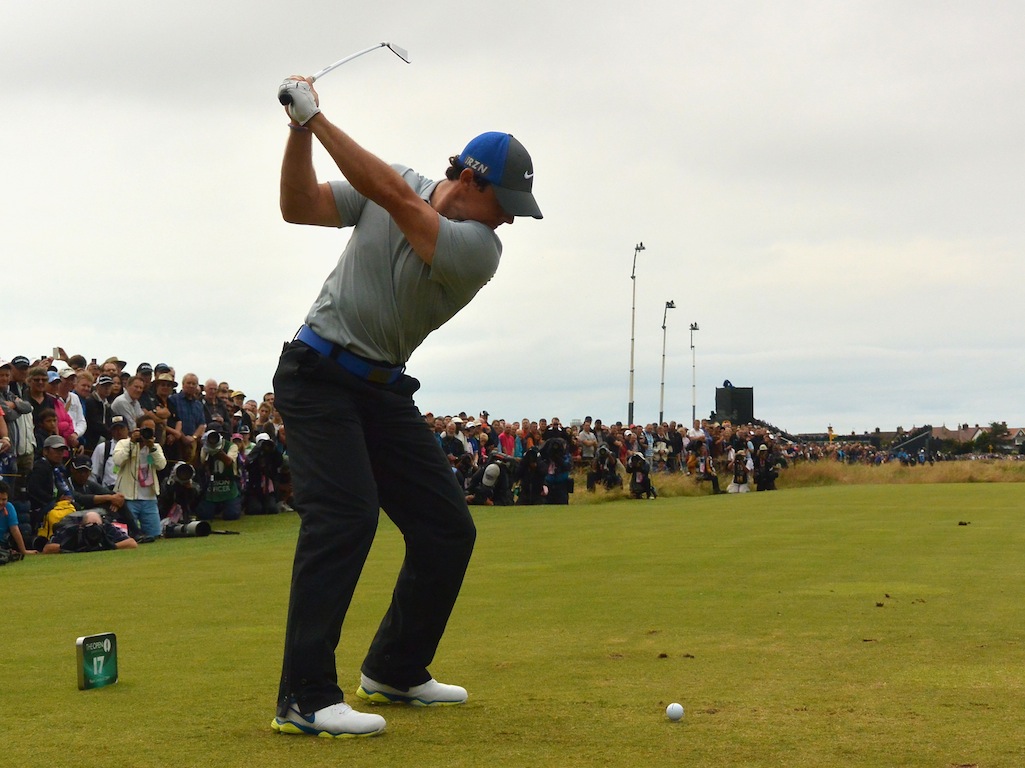
When was the last time you thought about your hip tilt? Never? That’s what I thought, but as we learn more about how the body works you may want to start thinking more about them.
Let me first explain what “hip tilt” is. Hip tilt is simply how much your hip plane is tilting in one direction or the other. If the left hip is higher than the right hip, you would then have “rightward hip tilt,” and vise versa.
So how does hip tilt dictate a good golf swing? Well let’s take a look and see how it works.
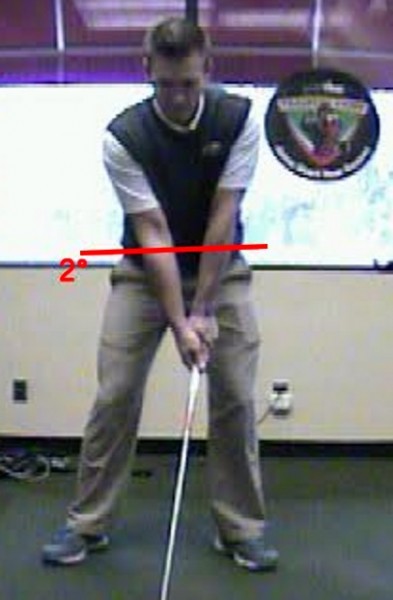
At address (for a right-handed golfer) with an iron, a golfer should have roughly 2 degrees of hip tilt to the RIGHT. At set up, if you have too much hip tilt to the right, your spine will also tilt too far to the right, which causes many problems.
As a golfer starts the backswing, we will see something that for years we were told not to do — the legs will change in flex. The left leg will begin to flex slightly more and the right leg (trail leg) will begin to lose flex and extend. By doing this, the golfer will essentially be turning their hips, but at the same time tilting them. The more the trail leg loses its flex, the more the golfer can turn and tilt his hips.
So the old adage of keeping the same flex in your leg at the top of your backswing to generate a coil is a thing of the past, as we know it is IMPOSSIBLE to keep the same amount of flex in the trail leg from address to the top of your backswing. What I find in most golfers is far too little hip tilt and turn.
If we look at a few images of the best golfers in the world, you will all notice one this about their lower bodies: their trail leg has straightened, and they have created a healthy amount of HIP TILT.
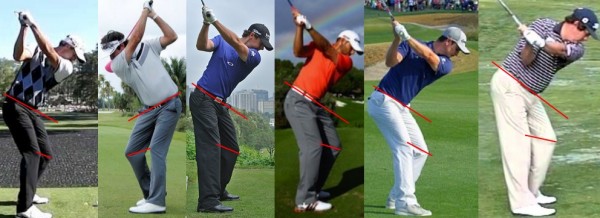
If you feel your amount of hip tilt is inadequate, here’s a drill that can help you get back on track.
Drill
Take an alignment stick and place it in your front two belt loops. From there, take your normal address position with a golf club. Take note of your hip tilt at address. Is the alignment stick tilted a little to the right side? Is it tilted too much?
From there make a backswing. At the top, pause and take a look at the stick again. Has it tilted to the left or did it remain pretty flat and level to the ground?
Make sure at the top of the backswing the alignment stick is tilting to the left. When done correctly, the right leg will extend and the left leg will bend to create the tilt.
Start working on this drill and you will be on track to a better golf swing!
Related: How The Body Affects The Golf Swing: Shoulder Bend
- LIKE97
- LEGIT13
- WOW6
- LOL4
- IDHT3
- FLOP7
- OB3
- SHANK71
Instruction
The Wedge Guy: The easiest-to-learn golf basic

My golf learning began with this simple fact – if you don’t have a fundamentally sound hold on the golf club, it is practically impossible for your body to execute a fundamentally sound golf swing. I’m still a big believer that the golf swing is much easier to execute if you begin with the proper hold on the club.
As you might imagine, I come into contact with hundreds of golfers of all skill levels. And it is very rare to see a good player with a bad hold on the golf club. There are some exceptions, for sure, but they are very few and very far between, and they typically have beat so many balls with their poor grip that they’ve found a way to work around it.
The reality of biophysics is that the body moves only in certain ways – and the particulars of the way you hold the golf club can totally prevent a sound swing motion that allows the club to release properly through the impact zone. The wonderful thing is that anyone can learn how to put a fundamentally sound hold on the golf club, and you can practice it anywhere your hands are not otherwise engaged, like watching TV or just sitting and relaxing.
Whether you prefer an overlap, interlock or full-finger (not baseball!) grip on the club, the same fundamentals apply. Here are the major grip faults I see most often, in the order of the frequency:
Mis-aligned hands
By this I mean that the palms of the two hands are not parallel to each other. Too many golfers have a weak left hand and strong right, or vice versa. The easiest way to learn how to hold the club with your palms aligned properly is to grip a plain wooden ruler or yardstick. It forces the hands to align properly and shows you how that feels. If you grip and re-grip a yardstick several times, then grip a club, you’ll see that the learning curve is almost immediate.
The position of the grip in the upper/left hand
I also observe many golfers who have the butt of the grip too far into the heel pad of the upper hand (the left hand for right-handed players). It’s amazing how much easier it is to release the club through the ball if even 1/4-1/2″ of the butt is beyond the left heel pad. Try this yourself to see what I mean. Swing the club freely with just your left hand and notice the difference in its release from when you hold it at the end of the grip, versus gripping down even a half inch.
To help you really understand how this works, go to the range and hit shots with your five-iron gripped down a full inch to make the club the same length as your seven-iron. You will probably see an amazing shot shape difference, and likely not see as much distance loss as you would expect.
Too much lower (right) hand on the club
It seems like almost all golfers of 8-10 handicap or higher have the club too far into the palm of the lower hand, because that feels “good” if you are trying to control the path of the clubhead to the ball. But the golf swing is not an effort to hit at the ball – it is a swing of the club. The proper hold on the club has the grip underneath the pad at the base of the fingers. This will likely feel “weak” to you — like you cannot control the club like that. EXACTLY. You should not be trying to control the club with your lower/master hand.
Gripping too tightly
Nearly all golfers hold the club too tightly, which tenses up the forearms and prevents a proper release of the club through impact. In order for the club to move back and through properly, you must feel that the club is controlled by the last three fingers of the upper hand, and the middle two fingers of the lower hand. If you engage your thumbs and forefingers in “holding” the club, the result will almost always be a grip that is too tight. Try this for yourself. Hold the club in your upper hand only, and squeeze firmly with just the last three fingers, with the forefinger and thumb off the club entirely. You have good control, but your forearms are not tense. Then begin to squeeze down with your thumb and forefinger and observe the tensing of the entire forearm. This is the way we are made, so the key to preventing tenseness in the arms is to hold the club very lightly with the “pinchers” — the thumbs and forefingers.
So, those are what I believe are the four fundamentals of a good grip. Anyone can learn them in their home or office very quickly. There is no easier way to improve your ball striking consistency and add distance than giving more attention to the way you hold the golf club.
More from the Wedge Guy
- The Wedge Guy: Golf mastery begins with your wedge game
- The Wedge Guy: Why golf is 20 times harder than brain surgery
- The Wedge Guy: Musings on the golf ball rollback
- LIKE83
- LEGIT13
- WOW5
- LOL1
- IDHT0
- FLOP4
- OB1
- SHANK8
Instruction
Clement: Stop ripping off your swing with this drill!

Not the dreaded headcover under the armpit drill! As if your body is defective and can’t function by itself! Have you seen how incredible the human machine is with all the incredible feats of agility all kinds of athletes are accomplishing? You think your body is so defective (the good Lord is laughing his head off at you) that it needs a headcover tucked under the armpit so you can swing like T-Rex?
- LIKE0
- LEGIT2
- WOW2
- LOL0
- IDHT0
- FLOP0
- OB0
- SHANK2
Instruction
How a towel can fix your golf swing

This is a classic drill that has been used for decades. However, the world of marketed training aids has grown so much during that time that this simple practice has been virtually forgotten. Because why teach people how to play golf using everyday items when you can create and sell a product that reinforces the same thing? Nevertheless, I am here to give you helpful advice without running to the nearest Edwin Watts or adding something to your Amazon cart.
For the “scoring clubs,” having a solid connection between the arms and body during the swing, especially through impact, is paramount to creating long-lasting consistency. And keeping that connection throughout the swing helps rotate the shoulders more to generate more power to help you hit it farther. So, how does this drill work, and what will your game benefit from it? Well, let’s get into it.
Setup
You can use this for basic chip shots up to complete swings. I use this with every club in my bag, up to a 9 or 8-iron. It’s natural to create incrementally more separation between the arms and body as you progress up the set. So doing this with a high iron or a wood is not recommended.
While you set up to hit a ball, simply tuck the towel underneath both armpits. The length of the towel will determine how tight it will be across your chest but don’t make it so loose that it gets in the way of your vision. After both sides are tucked, make some focused swings, keeping both arms firmly connected to the body during the backswing and follow through. (Note: It’s normal to lose connection on your lead arm during your finishing pose.) When you’re ready, put a ball in the way of those swings and get to work.

Get a Better Shoulder Turn
Many of us struggle to have proper shoulder rotation in our golf swing, especially during long layoffs. Making a swing that is all arms and no shoulders is a surefire way to have less control with wedges and less distance with full swings. Notice how I can get in a similar-looking position in both 60° wedge photos. However, one is weak and uncontrollable, while the other is strong and connected. One allows me to use my larger muscles to create my swing, and one doesn’t. The follow-through is another critical point where having a good connection, as well as solid shoulder rotation, is a must. This drill is great for those who tend to have a “chicken wing” form in their lead arm, which happens when it becomes separated from the body through impact.
In full swings, getting your shoulders to rotate in your golf swing is a great way to reinforce proper weight distribution. If your swing is all arms, it’s much harder to get your weight to naturally shift to the inside part of your trail foot in the backswing. Sure, you could make the mistake of “sliding” to get weight on your back foot, but that doesn’t fix the issue. You must turn into your trial leg to generate power. Additionally, look at the difference in separation between my hands and my head in the 8-iron examples. The green picture has more separation and has my hands lower. This will help me lessen my angle of attack and make it easier to hit the inside part of the golf ball, rather than the over-the-top move that the other picture produces.


Stay Better Connected in the Backswing
When you don’t keep everything in your upper body working as one, getting to a good spot at the top of your swing is very hard to do. It would take impeccable timing along with great hand-eye coordination to hit quality shots with any sort of regularity if the arms are working separately from the body.
Notice in the red pictures of both my 60-degree wedge and 8-iron how high my hands are and the fact you can clearly see my shoulder through the gap in my arms. That has happened because the right arm, just above my elbow, has become totally disconnected from my body. That separation causes me to lift my hands as well as lose some of the extension in my left arm. This has been corrected in the green pictures by using this drill to reinforce that connection. It will also make you focus on keeping the lead arm close to your body as well. Because the moment either one loses that relationship, the towel falls.


Conclusion
I have been diligent this year in finding a few drills that target some of the issues that plague my golf game; either by simply forgetting fundamental things or by coming to terms with the faults that have bitten me my whole career. I have found that having a few drills to fall back on to reinforce certain feelings helps me find my game a little easier, and the “towel drill” is most definitely one of them.
- LIKE12
- LEGIT2
- WOW2
- LOL0
- IDHT0
- FLOP2
- OB0
- SHANK8
-

 19th Hole2 days ago
19th Hole2 days agoDave Portnoy places monstrous outright bet for the 2024 Masters
-

 19th Hole3 weeks ago
19th Hole3 weeks agoJohn Daly stuns fans into silence with brutal opening tee shot on PGA Tour Champions
-

 19th Hole2 weeks ago
19th Hole2 weeks agoThings got heated at the Houston Open between Tony Finau and Alejandro Tosti. Here’s why
-

 19th Hole3 days ago
19th Hole3 days agoTiger Woods arrives at 2024 Masters equipped with a putter that may surprise you
-

 19th Hole1 week ago
19th Hole1 week agoReport: Tiger Woods has ‘eliminated sex’ in preparation for the 2024 Masters
-

 19th Hole3 weeks ago
19th Hole3 weeks agoCharlie Woods finds it tough going on American Junior Golf Association debut
-

 19th Hole1 week ago
19th Hole1 week agoAddiction, spinal fusion, and scam artists – Everything Anthony Kim revealed in candid interview with David Feherty
-

 19th Hole1 week ago
19th Hole1 week agoAnthony Kim says doctors told him that he ‘may not have much time left’ ahead of LIV return

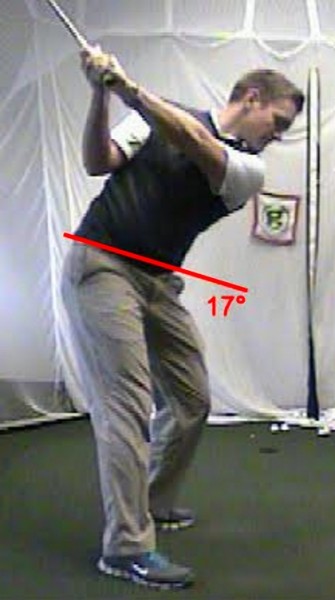
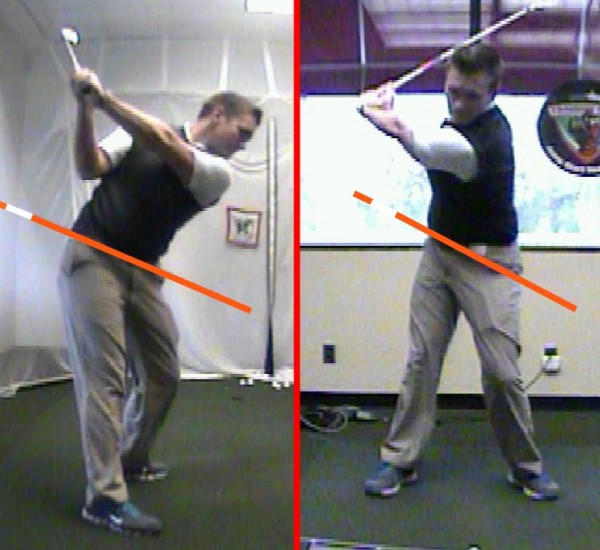
















Nick Randall
Apr 27, 2015 at 5:52 pm
Hey Scott,
I think you might be confusing hip tilt with rotation. At address your spine is set at around a 30 deg angle of flexion at the hips. When you rotate the hips in that flexed position, it gives the impression of hip tilt, when in fact the hips should have barely changed their angle relative to the spine. You demonstrate this yourself in the split screen image. Your hips aren’t actually tilted laterally in those photos, just rotated in a flexed position.
I like your set up position and promotion of left hip high by a few degrees, I think this encourages efficient rotation into the backswing. However perhaps encouraging people to tilt their hips and drop their left side might promote a reverse spine angle position, which isn’t ideal for dynamic rotation. Would really like to hear your thoughts
Nick
Pingback: How Your Hips Affect Your Golf Swing | Golf Training News
I'm not sure
Apr 27, 2015 at 4:18 pm
The points that you measure with the six pro golfers is not consistent with the face-on tilt measure in your introductory picture (2 degrees). For the six pro golfers, you measure the back half of the hip cross sections, which is in effect a measure of hip bend forward and not the same as the hip tilt you show at the beginning, which is face on at address. If you look at a hipbone-to-hipbone tilt in the pro golfer pictures, it is much less than the red line that you draw, which is essentially trailing hipbone to belt buckle, and the belt buck is lower than the hipbone on both sides of the body. Draw lines and measure from hipbone to hipbone (illiac crests of the hips). As measured, the tilt is extremely exaggerated when compared to the face on view.
That guy
Apr 27, 2015 at 2:38 pm
So what about impact? at what tilt should the hips be at impact and after impact. As a righty, I limit my right leg extension during the backswing in an effort to create a more consistent position during impact. Any thoughts?
James
Apr 27, 2015 at 2:36 pm
Thanks for the article!
Is this a stack-n-tilt-‘esque’ methodology? The images above all look like your weight is always on your lead side. In no way am I saying any of this is wrong, I just want to know if your recommendations would work for a non-stackntilt swing.
Mike
Apr 27, 2015 at 1:19 pm
Thank you for your time posting this article. In the title it implies you would explain how the hips effect the swing. I didn’t see that in your article. Care to further explain?